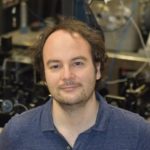Investigation CO2 plasma fundamentals for a clean future

The transition of the global economy to renewable energy over fossil fuels has been gaining momentum in recent years. More and more countries as well as businesses are pledging to abolish fossil fuel based hydrocarbons in their energy supply [1, 2]. The intermittent nature of renewable energy techniques such as solar and wind power does however pose new challenges to the electrical grid, which is not designed to cope with either large transient surplus or deficit.
To keep the transition from stagnating, there is a clear demand for new and improved energy storage methods like battery cell technology, hydrogen synthesis and fuel cell technology, but also hydrocarbon usage!
Nobel prize winner George Olah highlighted in 2011 in a seminal paper [3] the incredible use fulness of hydrocarbons and argued for a shift in their provenance, rather than a complete transition away from their usage. The societal and environmental issues caused by the anthropogenic emission of CO2 stem from the fact that there is no balance with nature’s ability to capture it, an imbalance that can be solved by increasing the rate of CO2 capture to close the carbon cycle. By using a transient surplus of renewable energy to capture CO2 in the form of hydrocarbons rather than simply storing it we gain access to a ‘new’ form of energy storage medium: CO2-neutral, ‘green’ hydrocarbons. A medium with an abundance of use cases and already existing global infrastructure.
To realize this promising prospect it is necessary to develop economically viable, competitive carbon conversion technologies. One such a technique is the plasma catalytic conversion in non-thermal plasmas, which in some instances can already surpass the viability threshold of 60% energy efficiency [4] albeit at a limited conversion of 20%. One facet of research to improve these figures focusses on deepening the understanding of fundamental processes in these non equilibrium plasmas. The challenge herein lies in that some of the most interesting plasmas are pulsed plasmas that are strongly transient in nature and highly confined in space, which requires fast diagnostics with high spatial resolution. Techniques such as optical emission spectroscopy and laser induced fluorescence can fulfill this role and provide important insights into parameters
such as the electron density, gas temperature and the CO2 conversion factor inside or shortly after a plasma pulse.
Acknowledgements
This project has received funding from the European Union’s Horizon 2020 research and innovation programme under the Marie Skłodowska-Curie grant agreement No. 813393.
References
[1] Google. Google Environmental Report 2019. Tech. rep. Google Inc., 2019. url: http://
services.google.com/fh/files/misc/google_2019-environmental-report.pdf.
[2] Karel Beckman and Jilles van den Beukel. The great Dutch gas transition. Tech. rep. Oxford
Energy Institute, 2019. url: https://www.oxfordenergy.org/wpcms/wp-content/uploads/
2019/07/The-great-Dutch-gas-transition-54.pdf.
[3] George A. Olah, G. K. Surya Prakash, and Alain Goeppert. “Anthropogenic Chemical
Carbon Cycle for a Sustainable Future.” In: Journal of the American Chemical Society
133.33 (Aug. 2011), pp. 12881–12898. issn: 0002-7863. doi: 10.1021/ja202642y. url: https:
//doi.org/10.1021/ja202642y.
[4] Ramses Snoeckx and Annemie Bogaerts. “Plasma technology – a novel solution for CO2
conversion?” In: Chem. Soc. Rev. 46 (19 2017), pp. 5805–5863. doi: 10.1039/C6CS00066E.
url: http://dx.doi.org/10.1039/C6CS00066E.

